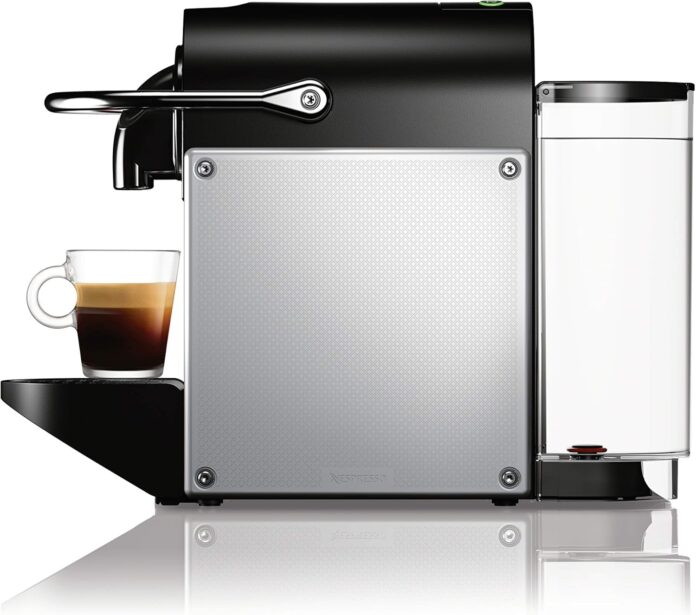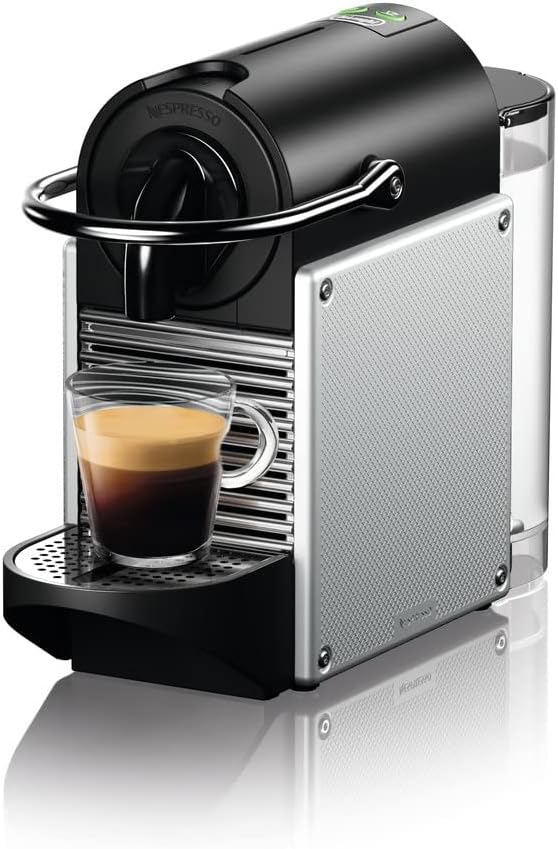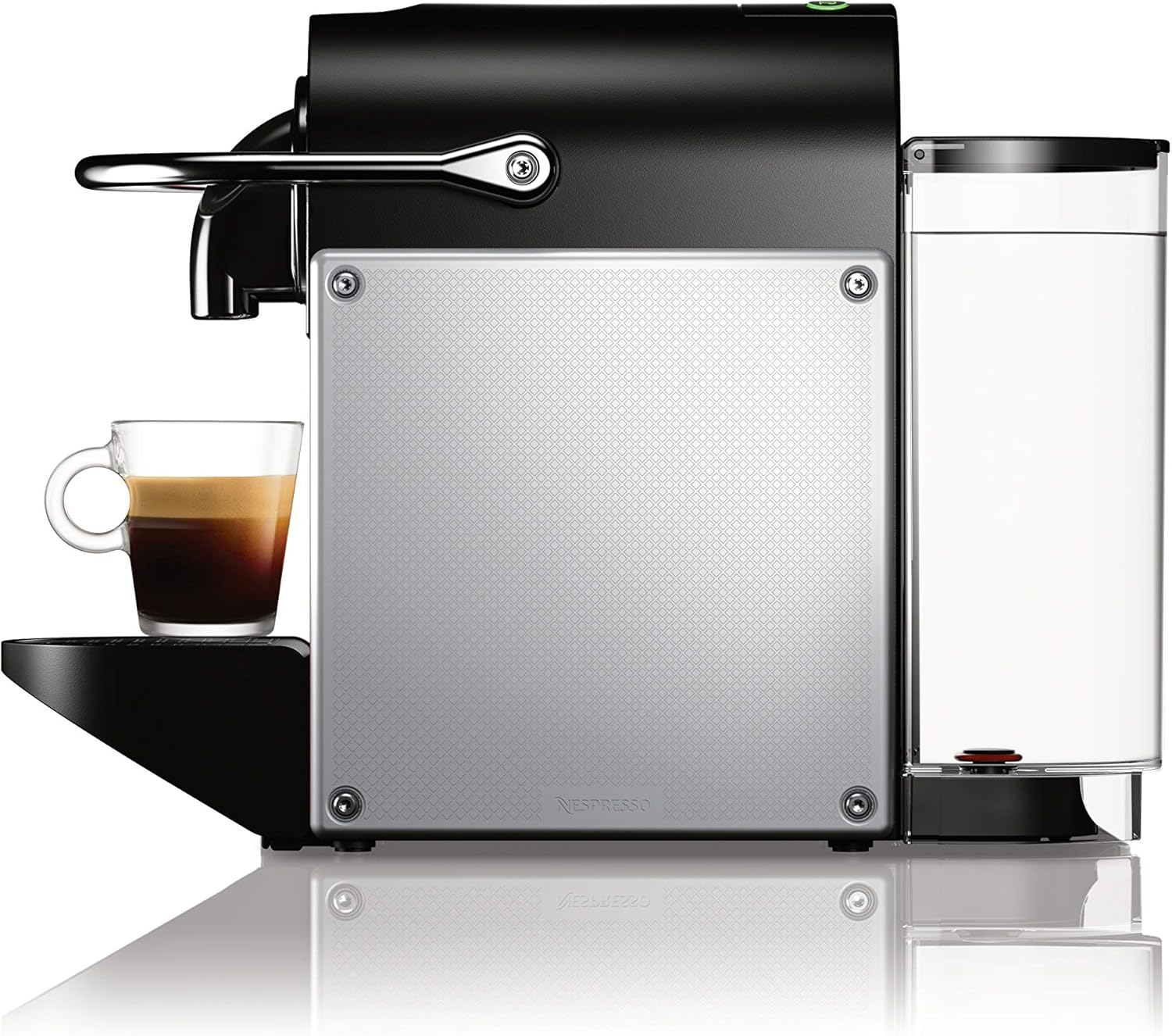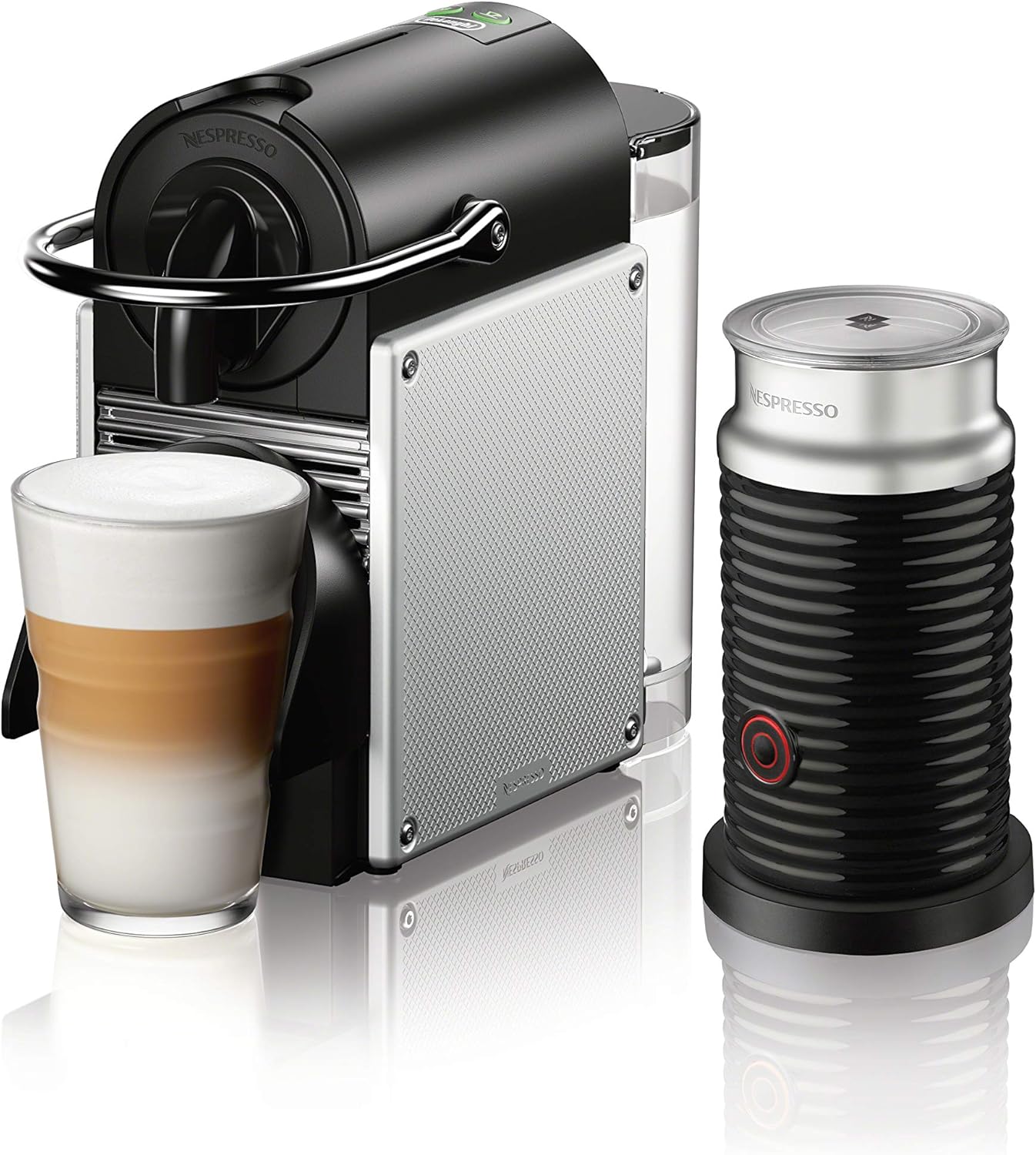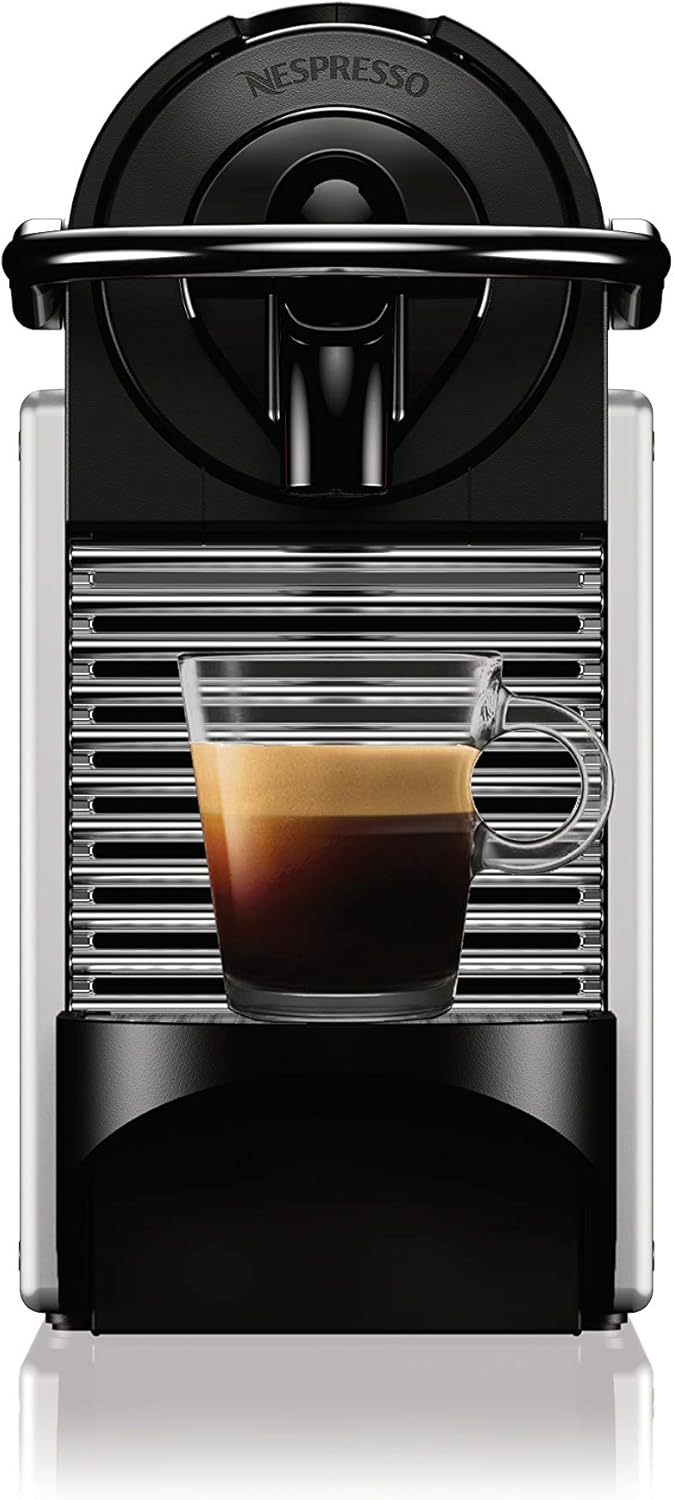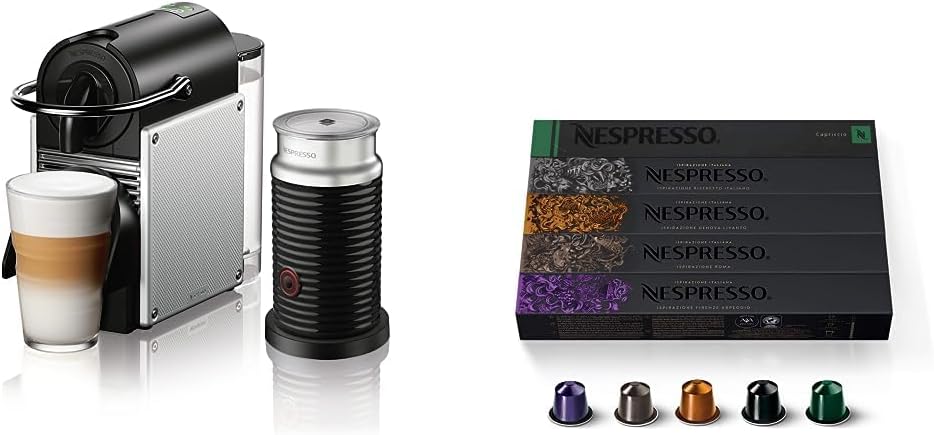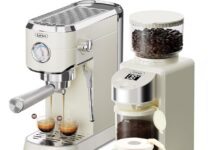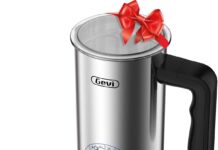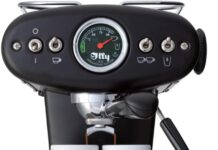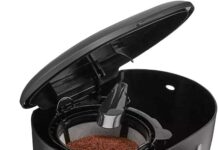Have you been looking for a compact espresso machine that fits a small counter but still feels like a proper espresso maker?
My overall impression
I find the Nespresso Pixie Espresso Machine by De’Longhi, 1100ml, Aluminum, Silver to be a smart little appliance that balances style, speed, and convenience. I appreciate how it manages to feel premium without demanding a huge footprint or a steep learning curve.
Why I thought it was worth testing
I wanted to see whether a compact machine could still deliver consistent espresso with good crema and whether the convenience features really made a difference in daily use. From my first shot, I focused on extraction quality, ease of use, and how the machine would fit into a busy kitchen routine.
Quick specification breakdown
I like to have a quick reference when I evaluate a machine, so I made a concise table with the main specs for quick scanning. It helps me compare features at a glance and decide what matters most for my use case.
| Feature | Specification |
|---|---|
| Product Name | Nespresso Pixie Espresso Machine by De’Longhi, 1100ml, Aluminum, Silver |
| Water Tank Capacity | 1100 ml (1.1 L) |
| Pump Pressure | 19 bar high-performance pump |
| Heating Time | 25 seconds |
| Controls | Tactile interface with 2 programmable buttons (Espresso, Lungo) |
| Capsule Compatibility | Nespresso Original capsules |
| Technology Highlights | Automatic piercing and brewing, Drop Stop technology |
| Energy Efficiency | Power save mode (auto switch off after 9 minutes of inactivity) |
| In the Box | Machine + complimentary starter set of Nespresso Original capsules (assortment varies) |
| Finish | Aluminum panels, Silver color |
| Footprint | Ultra-compact design for limited counter space |
Design and build quality
I’m impressed with how the Pixie manages to be both compact and visually appealing. The aluminum side panels give it a slightly premium look compared with entry-level plastic models, and the silver finish works well with a variety of kitchen aesthetics.
Size and footprint
The Pixie’s ultra-compact design is truly one of its selling points for me. I can place it on a small counter or in a tight apartment kitchen and still have room for a kettle or toaster nearby.
Materials and finish
The aluminum panels feel more solid than plain plastic, and I like the tactile metal finish on the sides. The rest of the chassis is high-quality plastic, which keeps the weight reasonable while still feeling durable.
Setup and first impressions
Unboxing and setup were straightforward, and the machine’s lightweight nature made it effortless for me to position and plug it in. It didn’t require any complicated assembly, which I appreciate when I want coffee fast.
What I did when unboxing
I rinsed the water tank, filled it with fresh water, inserted the starter capsules, and let the machine reach operating temperature. The 25-second heat-up claim held up, and I was pulling my first shot in under a minute.
Initial user interface impressions
The tactile buttons give satisfying feedback when pressed and are simple to understand. I liked that there are only two programmable buttons for Espresso and Lungo, keeping things minimalist and functional.
Brewing performance
I judge an espresso machine first and foremost by the espresso it produces, and the Pixie delivers a consistently strong crema and a focused shot. The 19 bar pump offers the pressure needed to extract oils and aromas from the capsules, giving a satisfying cup each time.
Crema and extraction
I consistently got a creamy layer on top of my espresso with good color and persistence. The extraction feels balanced; shots aren’t thin nor overly bitter when I use properly stored capsules.
Temperature and consistency
Temperature was steady across multiple shots in a row, and the 25-second heat-up time made it easy to restart brewing without long waits. If I brewed back-to-back, the water temp stayed consistent enough that my shots tasted uniform.
Controls and programmability
I value machines that are easy to program and that remember my preferences, and the two programmable buttons here do exactly that. I’ve programmed my preferred espresso and lungo volumes and found that the machine reliably reproduces my chosen settings.
How programming works
To program, I hold the chosen button while the machine is dispensing until it reaches the desired volume, then release. The machine stores the setting, and subsequent presses dispense the programmed amount automatically.
One-touch convenience
The one-touch controls make morning routines faster for me since I don’t have to measure or guess volumes. Lungo for a longer cup or espresso for a quick shot—two buttons keep things uncomplicated.
Capsule compatibility and selection
The Pixie works with Nespresso Original capsules, which gives me access to a huge range of flavors and intensities. I attach value to the variety because it lets me switch between mild, aromatic blends and intense ristretto-style capsules depending on my mood.
Starter capsules and variety
The machine ships with a complimentary starter set of Original capsules, and while assortments vary, it’s a helpful way to sample different blends right away. I enjoyed sampling multiple varieties and quickly identified my go-to capsules.
Third-party and refillable capsule options
I tested a couple of compatible third-party capsules with mixed results; some worked well while others produced less crema or an inconsistent shot. Refillable capsules exist, but I found them more fiddly and less reliable for routine use compared with Original capsules.
Water tank and capacity
The 1100 ml tank is larger than many entry-level machines, and I can go several shots before needing to refill. I found this capacity useful for small households or moderate office use without constant refills.
Refilling and access
The tank is easy to remove and replace, and its transparent plastic design lets me see the water level quickly. I refill it from the kitchen tap with no fuss, and it snugs back into place securely.
How often I refill
On average, the tank lasted me a couple of days when I was the primary user, making it convenient for daily routines without frequent interruptions for water top-ups.
Drop Stop technology and drip control
I appreciated the Drop Stop feature because it significantly reduces drips after extraction. That keeps my drip tray and counter cleaner and cuts down on the need for repeated wipe-downs.
Practical impact
Because drops are minimized after the capsule is pierced and brewed, I had fewer coffee spots on the machine or under the cup. For me, that means less cleaning time and a tidier coffee area.
Drip tray capacity and maintenance
The drip tray can hold drips and small spills, but I still emptied it regularly to keep the machine looking neat. The tray is easy to slide out, and cleaning it is quick with warm soapy water.
Speed and daily convenience
The quick 25-second heat-up time is a genuine productivity win for me, especially on busy mornings. I rarely had to wait more than half a minute from powering on to extracting the first shot.
How it fits my routine
The rapid startup made the Pixie feel like a true “grab-and-go” machine, and the simple controls meant I wasn’t fiddling with settings during rushed mornings. I liked brewing a shot for myself and another for a guest without significant delays.
Use in shared spaces
If you’re using this in a small office or shared kitchen, its speed and modest water capacity strike a good balance between convenience and footprint. It’s compact enough to fit in communal areas without intruding too much.
Noise level
I paid attention to how loud the pump sounded during extraction, and while it emits the usual espresso machine hum, I didn’t find it excessively noisy. In the context of normal kitchen noise, it’s relatively unobtrusive.
When noise matters
If you need a whisper-quiet device for very early mornings where others are sleeping, you might notice pump noise, but for my typical use it was acceptable. The extraction is brief, which means the noisy part is short-lived.
Comparisons with other machines
It’s similar in noise level to other compact pump-driven capsule machines, and not as loud as some larger espresso machines with long pump cycles. The short run time of the pump also helps keep the audible footprint small.
Energy efficiency
The automatic power-save mode that switches off after 9 minutes of inactivity is a nice energy-saving feature for me. It reduces power draw if I forget to switch off the machine manually, which has become a comfort feature in my routine.
Environmental and cost implications
Auto switch-off helps minimize energy waste and contributes to reducing my kitchen’s standby power use. Over time this can save small amounts of electricity, and it’s an appreciated automatic safety feature.
Manual vs automatic
I still turn the machine off manually when I’m done for the day, but the auto-off provides a safety net for occasional forgetfulness. It’s a helpful layer for busy households.
Cleaning and maintenance
Maintenance is straightforward, and the parts that require attention are easy to access and clean. I’ll describe how I handled routine cleaning and periodic descaling so you can estimate the ongoing upkeep.
Daily cleaning
I rinse the drip tray and empty used capsules regularly, wiping the machine exterior with a damp cloth to keep it looking fresh. The capsule container and water tank are easy to remove for quick rinses.
Descaling routine
I descale according to the machine prompts or roughly every 3 months depending on water hardness and use frequency. The descaling procedure is standard for Nespresso machines: I use a Nespresso-approved descaling solution, follow the steps in the manual, and run clean water cycles afterward.
Troubleshooting common issues
I encountered a couple of minor hiccups during testing and want to share quick fixes that worked for me. They’re usually simple mechanical or user-related issues rather than machine faults.
Machine not powering on or heating
If the machine doesn’t power on or heat, I check the power connection and ensure the water tank is seated correctly. Sometimes unplugging for a few minutes and plugging back in resets internal electronics and clears minor glitches.
Capsule not ejecting or jamming
If a capsule gets jammed, I turn the machine off, let it cool, and then gently open the lever to release it. Regular use and removing used capsules often prevent jams, and avoiding overfilling the capsule container helps too.
What I liked most
There are several features I consistently found valuable in day-to-day use. The combination of speed, compact size, and solid espresso quality make this machine a great pick for many users.
Highlights
I loved the quick heat-up, the reliable crema production, and the aluminum finish that makes the Pixie look nicer on the counter. Those factors combined made it a strong performer in my kitchen.
Small but meaningful conveniences
The Drop Stop technology and the tactile buttons for one-touch espresso and lungo added a lot of practical convenience. The auto-off feature also gave me peace of mind when I was rushing out in the morning.
What could be better
No product is perfect, and my experience revealed some trade-offs you’ll want to consider. These are mostly related to the limitations inherent in compact capsule machines.
Fixed cup sizes and shot control
While programmability is great, the Pixie only has two dedicated buttons, so flexibility is limited compared with machines that offer more shot options or integrated milk steaming. If you want built-in milk frothing, you’ll need a separate milk steamer or a different machine.
Capsule and waste management
The used capsule container capacity is reasonable but not huge, so if you’re entertaining a group you’ll empty it frequently. Also, relying on Original capsules means ongoing expense and some environmental consideration, although Nespresso recycling programs help mitigate that.
Who I think should buy this machine
I recommend the Pixie for urban dwellers, small households, and anyone who values speed and simplicity without sacrificing espresso quality. It works especially well when counter space is limited and you want a consistent cup quickly.
Households and usage scenarios
This is a top pick for people who want daily espresso without fuss, for small offices where users prefer a compact machine, and for those who value a polished aesthetic in a small package. It also makes a solid gift for coffee lovers who use capsules.
Who might want something else
If you’re a heavy entertainer who needs a big water tank and a large used capsule capacity, a larger machine might be more convenient. If you want a built-in milk steamer or barista-level manual controls, look at higher-end machines or models with integrated frothers.
Comparison with similar machines
I compared the Pixie to a couple of other compact Nespresso models to gauge where it stands. These comparisons helped me decide which machine suits different priorities: aesthetics, size, or straightforward performance.
Pixie vs Essenza Mini
The Essenza Mini is also ultra-compact and slightly more minimal, but the Pixie’s aluminum panels feel more upscale and the larger 1100 ml tank offers more capacity. If you want the smallest possible footprint, the Essenza Mini is marginally smaller, but the Pixie feels more robust and feature-rich.
Pixie vs Inissia
The Inissia is often a lower-cost alternative with similar capsule compatibility, but the Pixie’s metal side panels and slightly better build quality make it feel like a step up. The Pixie also tends to offer quicker heat-up and a more refined finish.
Value for money
I judge value based on performance, longevity, and convenience, and the Pixie delivers strong value for those who fit its use profile. I found it to be a well-rounded machine with few compromises for most capsule users.
Cost considerations
While not the cheapest capsule machine available, I felt the build quality and features justified the price in my use. The ongoing cost of capsules is a separate consideration, but that applies to all capsule systems.
Long-term satisfaction
I think owners who prioritize consistent shots, reliability, and a compact form factor will remain satisfied with the Pixie over the long term. For me, it balanced price and features well.
Practical tips and tricks I picked up
After a few weeks with the Pixie, I developed small habits that improved my experience and kept the machine running smoothly. These are simple tweaks anyone can adopt.
Best water practices
I use filtered water to reduce mineral buildup and improve taste, which helps reduce the frequency of descaling. Filtering also tends to improve overall cup clarity and reduces scale-related issues.
Capsule storage
I store capsules in a cool, dry place and try to finish opened containers quickly to preserve freshness. Fresh capsules create the best crema and most vibrant flavor.
Cleaning habits
I empty the drip tray and used capsule container every couple of days and wipe the exterior weekly. Small maintenance keeps the machine looking new and prevents occasional odors.
Recipes and ways I used the machine
The Pixie is primarily an espresso capsule machine, but I experimented with a few simple recipes that expanded my morning options. These are easy to make and use the Pixie’s strengths.
Basic recipes I enjoyed
- Espresso macchiato: Pull a single espresso, then add a tablespoon of steamed milk or foam from a separate frother.
- Lungo americano: Pull a lungo and add hot water to taste for a longer cup that’s similar to drip coffee.
- Iced espresso: Pull a shot over ice and add a splash of milk or syrup for a refreshing quick drink.
Using separate milk tools
If you want lattes or cappuccinos, I recommend a standalone milk frother or an Aeroccino from Nespresso. The Pixie itself doesn’t include a milk frother, but pairing it with a quality frother yields cafe-style drinks.
Warranty and support
I checked the warranty info and found that De’Longhi and Nespresso generally offer strong product support and warranties. I also appreciated that replacement parts and accessories are widely available.
Service and parts
If something goes wrong, Nespresso and De’Longhi support channels are easy to reach and often offer helpful troubleshooting. Replacement parts like water tanks, drip trays, and capsule containers are usually available online.
Customer experience
My interactions with support during setup questions were straightforward, and the online resources are useful for step-by-step help. The manual is clear and the online FAQs cover common issues.
Final verdict
After using the Nespresso Pixie Espresso Machine by De’Longhi, 1100ml, Aluminum, Silver extensively, I feel confident recommending it to people who want a compact, fast, and stylish espresso solution. Its combination of build quality, dependable espresso extraction, and practical features like Drop Stop and auto-off make it a compelling choice.
Bottom-line summary
If you prioritize counter space, speed, and consistent capsule extraction, the Pixie is likely to be a satisfying purchase. It’s particularly well-suited for urban dwellers, small households, and anyone who wants a fuss-free way to enjoy a variety of espresso flavors.
Pros and cons
I always sum up with clear pros and cons so you can quickly decide whether this machine aligns with your needs.
Pros
- Compact and attractive aluminum design that fits small spaces.
- Fast 25-second heat-up time for quick brewing.
- 19 bar pump produces good crema and extraction.
- Drop Stop technology reduces drips and mess.
- Two programmable one-touch buttons for simplicity.
- 1100 ml water tank reduces refills compared with other compact units.
- Auto power-save mode helps conserve energy.
Cons
- Only compatible with Nespresso Original capsules (not Vertuo).
- No built-in milk frother; additional tool needed for milk drinks.
- Used capsule container capacity is moderate and may require frequent emptying if used heavily.
- Limited to two primary button options; less flexible than machines with more settings.
Closing tips before you buy
If you’re on the fence, I’d recommend checking how you plan to use the machine day-to-day: how many cups you typically brew, whether you want milk drinks, and if you prefer a minimalist setup. I found the Pixie nearly ideal for quick, quality espresso without fuss.
Final practical advice
Buy a small milk frother if you like milk-based drinks, use filtered water to extend the time between descaling, and consider the ongoing capsule cost in your budget. Enjoy the convenience and consistent results the Pixie offers for everyday espresso.
Disclosure: As an Amazon Associate, I earn from qualifying purchases.


